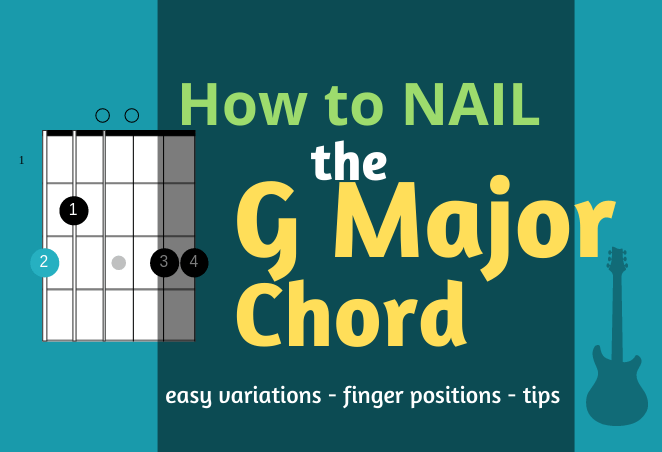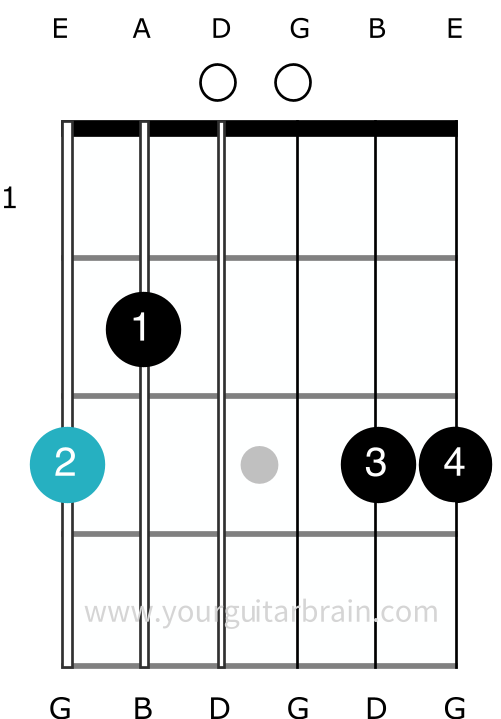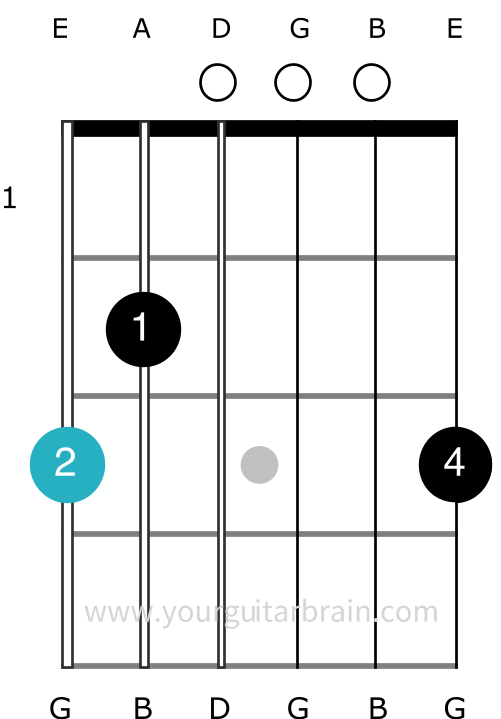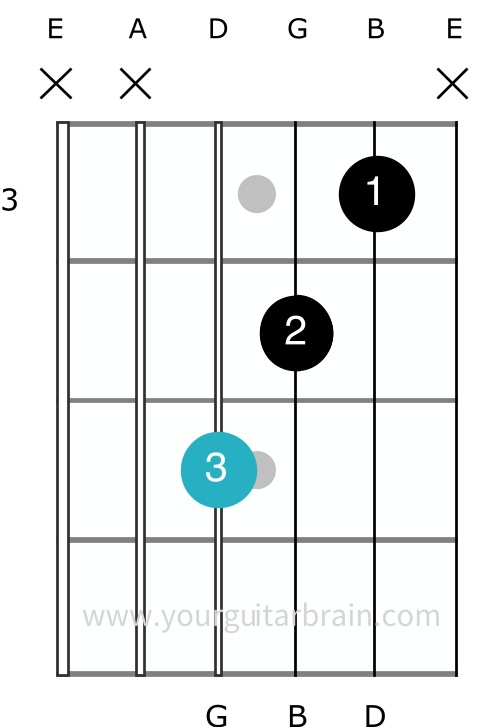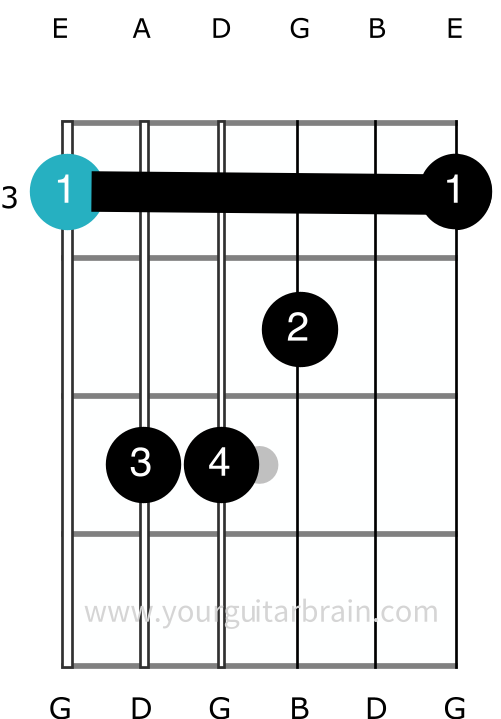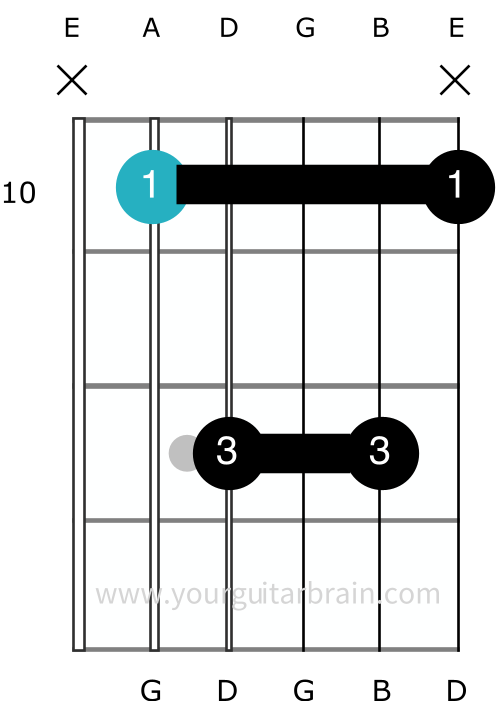G chord guitar: Learn how to play the G Major guitar chord with 5 variations inc. an easy shape for beginners to get stuck into.
Today, you’re going to learn how to play the G Major guitar chord in five different ways. We have shapes that are best for beginners, all the way to barre chord shapes.
One thing is for sure; these G Major chord shapes are the most used by electric and acoustic guitarists across all music styles.
The easy-read chord diagrams show you where to place your fingers on the fretboard and which notes make up the G Major chord. We even have tips on the best way to practise the G Major chord shapes.
Let’s get this show on the road.
“G Chord” is Short for “G Major Chord”
The G Major guitar chord is made from three notes; G, B, and D.
It’s important you understand that when somebody says the “G chord”, they probably mean the G Major chord.
Because there are many different types of chords with a G root note (G Major, G minor, G diminished, to name a few), it’s best to include the word “Major” when talking about this chord.
You’ll avoid potential confusion down the line and wasted time using the wrong chord in a song you want to play.
g chord guitar shapes are great for g chord guitar g chord guitar
G Major Chord Sound
Ever noticed that many of your favourite songs have a G Major chord? Yup, the G Major chord is one of the most popular chords you’ll play on your guitar.
The reason why we find this chord in so many songs is because it belongs to some of the most used key signatures used to write popular music.
Like all Major chords, the G Major chord sounds positive, happy and uplifting. For this reason, you’ll come across the G Major chord in every style of music you can think of, from pop to rock, to blues, to Country and beyond.
G Major Chord Notations
G | G Maj | G Major
G Major Chord Theory Facts x 5
- The G Major chord contains the notes: G – B – D.
- We build a Major chord by layering the root, 3rd and 5th notes in a Major scale. For instance, the G Major chord is created when we take the 1st (G), 3rd (B), and 5th (D) notes from the G Major scale and play them simultaneously.
- The G Major chord formula is: 1 – 3 – 5.
- The intervals of a G Major chord are root > Major third > perfect fifth.
- G Major appears as the V (5th) chord in the popular I – IV – V chord progression in the key of C Major: C – F – G.
Good to Know
The fingerings are shown in the G Major chord diagrams below, along with the chord notes. The G root note is highlighted in blue.
Shape 1 – The Open G Major Chord Shape
First up, we have the most popular way to play the G Major chord on the guitar. You use all four fingers and play all six strings in this shape (see the diagram below).
Note how this open G Major chord shape is similar to the second G Major shape coming next. The only difference is that this first shape contains an extra D note, which you play on the 3rd fret of the B string, giving the chord a slightly fuller sound.
The anchored third finger on the B string makes this G Major shape a great choice when changing to the D Major chord.
Open G Major chord shape
g chord guitar shapes are great for g chord guitar g chord guitar
Here are the finger positions:
- First (index) finger – 2nd fret of the A (2nd) string
- Second (middle) finger – 3rd fret of the low E (1st) string
- Third (ring) finger – 3rd fret of the B (2nd) string
- Fourth (pinky) finger – 3rd fret of the top E (1st) string
Top Tip: Avoid muting the strings in this G Major chord formation by curving your fingers over more than you think.
Be sure to apply the right amount of pressure to your fingertips; enough to get the notes cleanly ringing out, not too much so you bend the strings out of tune.
Shape 2 – Three Fingered G Major Chord Shape
Below is a popular variation of the previous open G Major guitar chord shape. In this shape, we use three fingers instead of four and leave out the D note on the 3rd fret of the B string. In its place, we include the open B string note.
The subtle note difference makes this 3-fingered G Major chord sound a touch more airy than its counterpart, and is found played in more traditional songs.
G Major guitar chord shape with 3 fingers
Finger positions:
- First (index) finger – 2nd fret of the A (2nd) string
- Second (middle) finger – 3rd fret of the low E (1st) string
- Fourth (pinky) finger – 3rd fret of the top E (1st) string
Top Tip: You can replace the pinky finger with the third finger when you play this G Major chord voicing; it’s up to you.
Which G Major Chord Shape is Right?
There is no right or wrong way to play the open G Major chord shape. I personally prefer the four-fingered version, and this is what I primarily teach my guitar students.
Your best option is to learn both shapes, as either can pop up in a song you want to learn in the future.
Shape 3 – Another Three-Fingered G Major Chord Shape
Shape number three is a simple beginner-friendly way to play the G Major chord on your electric or acoustic guitar.
When you play this shape, make sure you don’t play the bottom E and A strings and the top E string (indicated by the ‘X’ above the chord chart).
Even though this shape only has three notes, you beginners reading this will have to work on your strumming and picking technique – plus your fretting hand position – to make sure the chord sounds tidy. No clattering rogue notes!
Easier G Major chord shape with three fingers
Finger placements:
- First (index) finger – 3rd fret of the B (2nd) string
- Second (middle) finger – 4th fret of the G (3rd) string
- Third (ring) – 5th fret of the D (4th) string
Shape 4 – G Major Barre Chord “E-Form” Shape
Here’s a classic barre chord shape many guitarists opt for when playing the G Major chord. We use the open E Major chord shape to make this chord shape, move it up the neck, and press our index finger down on all 6 strings to form this movable barre chord voicing.
Have a look:
G Major barre chord “E-Form” Shape
These are the finger placements:
- First (index) finger – 3rd fret of the low E (6th) string & barre strings 6-1
- Second (middle) finger – 4th fret of the G (3rd) string
- Third (ring) finger – 5th fret of the A (5th) string
- Little (pinky) finger – 5th fret of the D (4th) string
Like all barre chord shapes, beginners (and out-of-practice guitar players) will find this G Major chord shape a little challenging.
It’s nothing some dedicated finger-strengthening exercises, patience, and good old-fashioned elbow grease won’t fix though.
Shape 5 – G Major Barre Chord “A-Shape”
This final G Major chord shape is another popular barre chord variation based on the open A Major guitar chord shape. The shape is so popular that it’s one of the shapes featured in my guitar chord book Essential Guitar Chords for Beginners, which focuses on the chords found in the most popular songs.
Important Note: I recommend you don’t attempt to play barre chords unless you can play the seven most common open chords on your guitar first.
You won’t have the finger strength, speed or coordination to play the barre cleanly otherwise, and you’ll wind up getting frustrated.
G Major barre chord “A-Form” Shape
Finger placements:
- First (index) finger – 10th fret of the A (5th) string & barre strings 5-1
- Third (ring) finger – 12th fret of the D (4th) string & barre strings 4-2
Pro Tip
Mute the low E string by deadening it with the tip of your index finger. This will prevent any unwanted string noise. Don't press your finger onto it, as you don't want the note to ring out.
Summing it Up
So, there you have it! A few different ways to play the G major chord on the guitar. With practice, you’ll be able to switch between these voicings fluidly and effortlessly.
As you experiment with different chord shape voicings, you’ll discover new sounds and textures that you can add to your music. So get out there and start playing!

